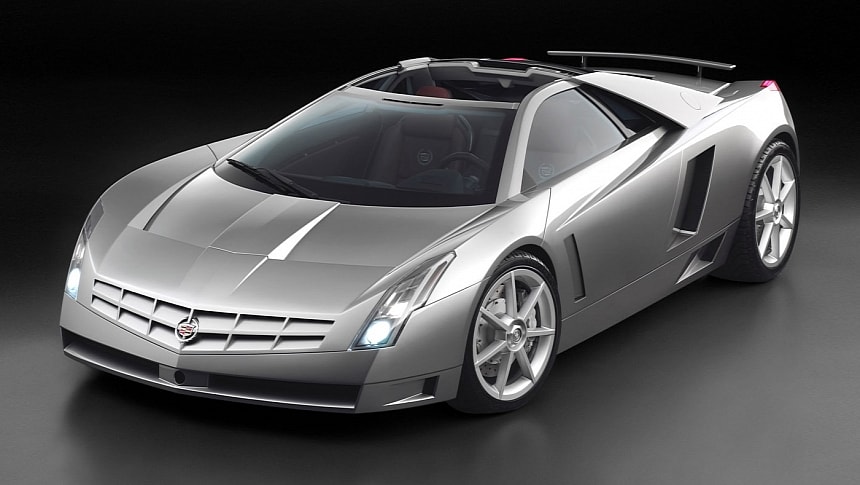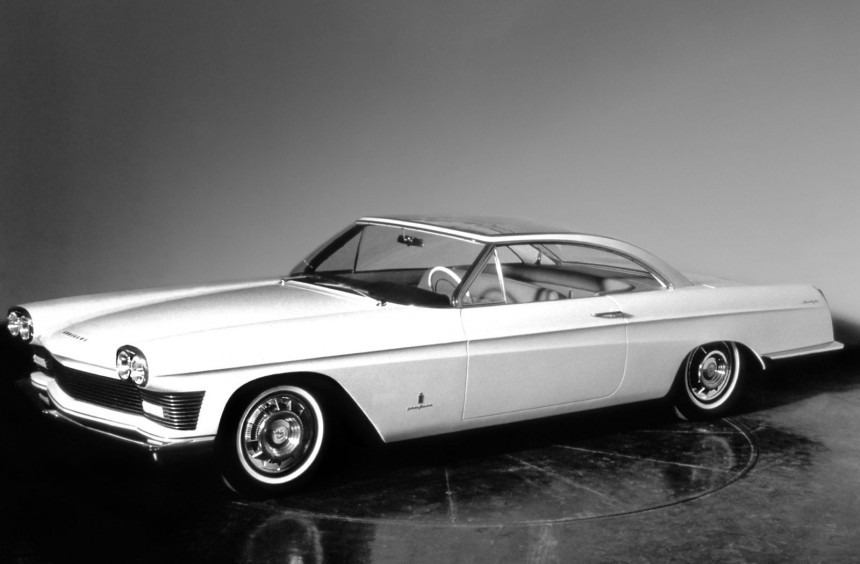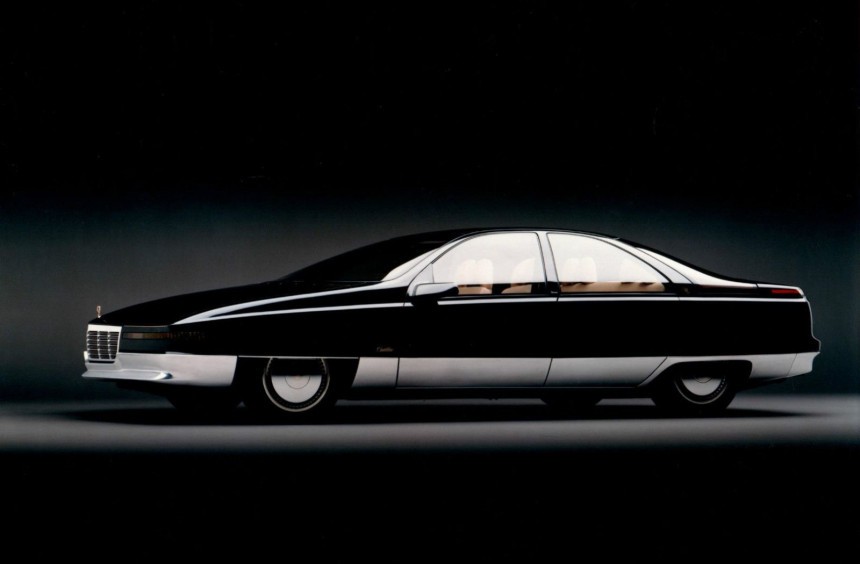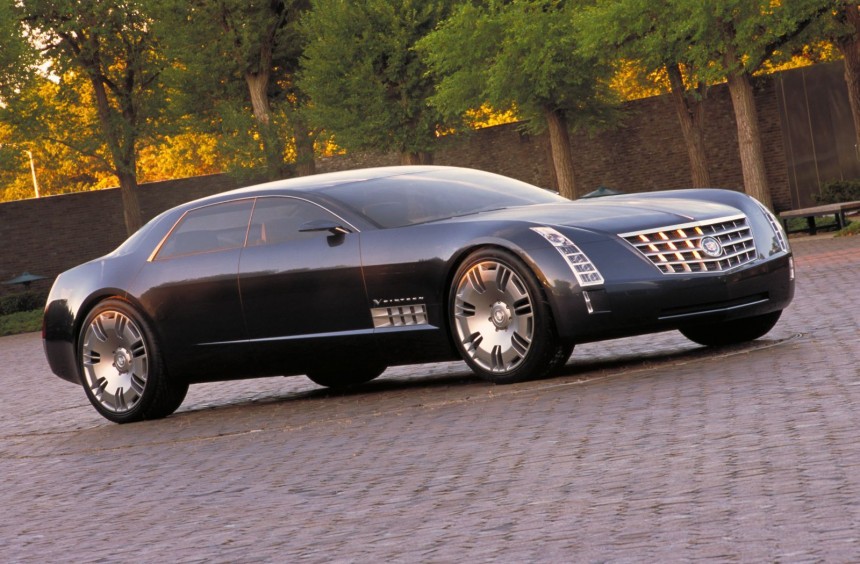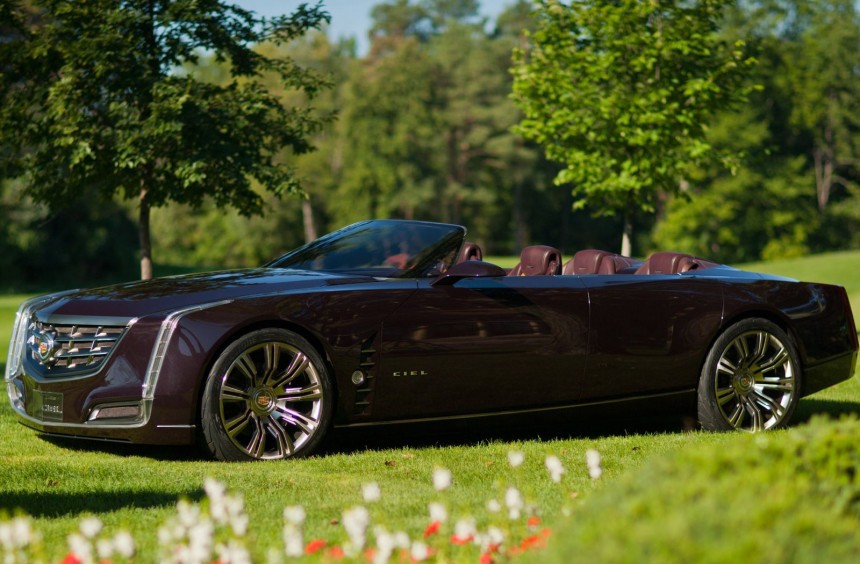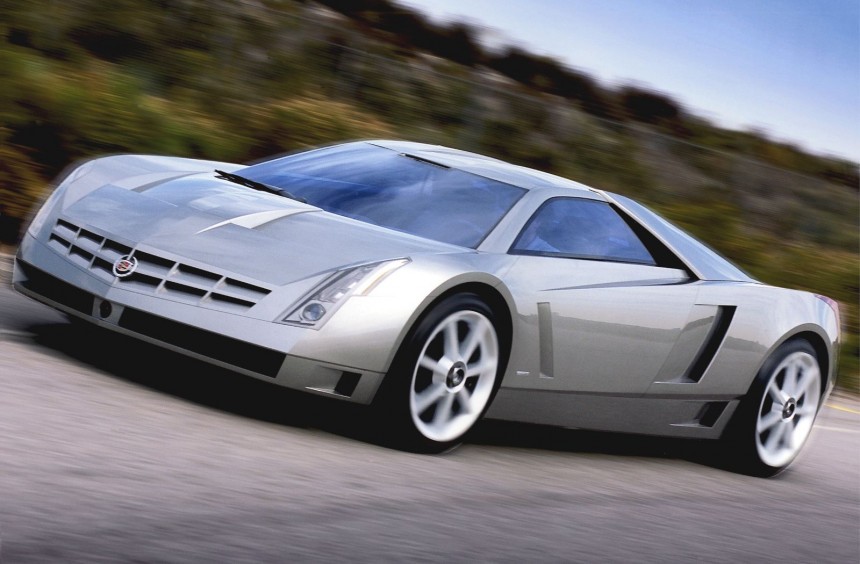For decades, the ultimate expression of American mass-produced automotive luxury, Cadillac has also developed some of the industry's most fascinating concept cars.
Founded in 1902 and acquired by General Motors seven years later, Cadillac is currently one of the oldest carmakers that never ceased to produce vehicles.
Over the last 122 years, Cadillac has built some of the finest luxury cars in the world and stood at the forefront of technical innovations, such as the first mass-produced V8 engine, the first electric self-starter, or the first fully automatic transmission (co-developed with Oldsmobile).
Apart from its iconic production models and pioneering features, Cadillac has also developed a series of fascinating concept cars and in this article, we're going to take a look at our favorite five.
During the 1950s, many American manufacturers partnered up with Italian coachbuilders to produce exquisite road and show cars.
Cadillac was no exception, commissioning Batista "Pinin" Farina and his team to design a series of concepts inspired by the Eldorado Brougham.
The most intriguing of those concepts was a two-door hardtop called Starlight, which debuted at the 1959 Paris Motor Show.
Apart from the elegant design, the land yacht's highlighting feature was a curved roof made entirely from Plexiglass. Furthermore, instead of a conventional headliner, the Starlight had four articulated metal plates that could be folded down and stored away behind the parcel shelf when not in use.
While it was met with enthusiasm by the crowd and the press, with some arguing that it deserved to be the next Eldorado, the Starlight never made it into production and was eventually destroyed.
By the end of the 1980s, Cadillac was a shadow of its former self in terms of design. Though still offering a high level of luxury, particularly inside, its models were much smaller and unappealingly boxier than the Caddies of old.
In 1986, Ford introduced the new Taurus, which moved away from the boxy design language that plagued the entire American automotive industry in the first part of the 1980s.
Suddenly, Detroit manufacturers scrambled to conceive a new design language, and Cadillac was no exception.
In 1989, the division's new styling direction was showcased with a futuristic concept dubbed Voyage.
Apart from its futuristic design that employed a multitude of ample curves, the Voyage made car aficionados stand up and applaud thanks to its many high-tech features like a dual-screen navigation system, a rearview camera, or a hands-free, voice-activated phone.
Furthermore, the concept boasted an electronically-assisted 4WD system that used an on-board computer to activate the front wheels when loss of traction was detected.
Such technologies might be mainstream today, but back in 1989, they were ahead of their time.
Powered by a 4.5-liter overhead-cam V8 good for 275 hp, the futuristic land yacht was never considered for production, but it had a huge influence on the design of Cadillac's production models over the next decade.
During the 1930s, Cadillac produced the V-16, an ultra-luxurious flagship powered by - you guessed it - a V16.
Dubbed one of the finest luxury cars of its era, the model was discontinued in 1940, and it didn't get a V16-powered successor.
The GM division finally decided to change that in 2003 when it unveiled a spiritual successor in the form of the Sixteen concept.
Designed by a team of GM's finest stylists, the humongous four-door pillarless sedan showcased a new design language, and under its dual-opening hood, it hid an equally humongous engine.
Developed by Katech Inc. and based on the Gen IV LS architecture, the all-new V16 engine displaced a whopping 829 cubic inches (13.6 liters) and featured the Displacement on Demand technology, which could shut down either twelve or eight cylinders when cruising.
According to Cadillac, the naturally-asp engine was able to produce a minimum of 1,000 hp and at least 1,000 lb-ft (1,356 Nm) of torque.
Though rumors of a limited production run emerged shortly after its unveiling, the Sixteen never went past the concept stage.
For decades, the Cadillac Eldorado was the ultimate American luxury convertible, but from the 1980s to 2002, when it was retired, the nameplate was applied to the division's flagship two-door coupe, which had little in common with its iconic predecessors.
Though it didn't revive the Eldorado, in 2011, Cadillac unveiled a breathtaking, ultra-luxurious convertible that celebrated its past flagships.
Designed by Niki Smart, the modern four-door land yacht called Ciel (sky, in French) was a showcase of automotive design taken to artform levels.
Apart from its breathtaking looks, the Ciel was also high-tech, featuring a powertrain comprised of a 425-hp 3.6-liter twin-turbo V6 and a hybrid system that used a lithium-ion battery pack.
The exquisite Rolls-Royce-rivaling concept earned universal praise, but while Cadillac considered developing a production version, only an additional hardtop coupe concept called Elmiraj was built.
By the early 2000s, Cadillac's image was tarnished once again by boring-looking models that only appealed to wealthy seniors.
The division needed a boost, so management decided it was time for an insane halo car that would excite the younger demographic.
That insane halo car was unveiled at the 2002 Detroit Auto Show as part of the brand's 100th anniversary celebrations.
Dubbed Cien (Spanish for one hundred), the F-22 Raptor-inspired concept was a huge departure from what Caddilac had built over the last century.
With a mix of angular shapes combined with only a few curves, the mid-engine hypercar looked aggressive yet still oozed Cadillac luxury.
Power came from a bespoke 7.5-liter V12 that produced 750 hp and 650 lb-ft (881 Nm) of torque. Moreover, it featured the Displacement on Demand technology later used on the Sixteen's engine.
Many have speculated that the Cien was production-bound since it was a fully functional, tried and tested vehicle. As it turned out, it really was scheduled to go into production, but due to financial concerns, GM decision-makers eventually scrapped any production plans.
Over the last 122 years, Cadillac has built some of the finest luxury cars in the world and stood at the forefront of technical innovations, such as the first mass-produced V8 engine, the first electric self-starter, or the first fully automatic transmission (co-developed with Oldsmobile).
Apart from its iconic production models and pioneering features, Cadillac has also developed a series of fascinating concept cars and in this article, we're going to take a look at our favorite five.
Cadillac Starlight
Cadillac was no exception, commissioning Batista "Pinin" Farina and his team to design a series of concepts inspired by the Eldorado Brougham.
The most intriguing of those concepts was a two-door hardtop called Starlight, which debuted at the 1959 Paris Motor Show.
Apart from the elegant design, the land yacht's highlighting feature was a curved roof made entirely from Plexiglass. Furthermore, instead of a conventional headliner, the Starlight had four articulated metal plates that could be folded down and stored away behind the parcel shelf when not in use.
While it was met with enthusiasm by the crowd and the press, with some arguing that it deserved to be the next Eldorado, the Starlight never made it into production and was eventually destroyed.
Cadillac Voyage
In 1986, Ford introduced the new Taurus, which moved away from the boxy design language that plagued the entire American automotive industry in the first part of the 1980s.
Suddenly, Detroit manufacturers scrambled to conceive a new design language, and Cadillac was no exception.
In 1989, the division's new styling direction was showcased with a futuristic concept dubbed Voyage.
Apart from its futuristic design that employed a multitude of ample curves, the Voyage made car aficionados stand up and applaud thanks to its many high-tech features like a dual-screen navigation system, a rearview camera, or a hands-free, voice-activated phone.
Furthermore, the concept boasted an electronically-assisted 4WD system that used an on-board computer to activate the front wheels when loss of traction was detected.
Such technologies might be mainstream today, but back in 1989, they were ahead of their time.
Powered by a 4.5-liter overhead-cam V8 good for 275 hp, the futuristic land yacht was never considered for production, but it had a huge influence on the design of Cadillac's production models over the next decade.
Cadillac Sixteen
Dubbed one of the finest luxury cars of its era, the model was discontinued in 1940, and it didn't get a V16-powered successor.
The GM division finally decided to change that in 2003 when it unveiled a spiritual successor in the form of the Sixteen concept.
Designed by a team of GM's finest stylists, the humongous four-door pillarless sedan showcased a new design language, and under its dual-opening hood, it hid an equally humongous engine.
Developed by Katech Inc. and based on the Gen IV LS architecture, the all-new V16 engine displaced a whopping 829 cubic inches (13.6 liters) and featured the Displacement on Demand technology, which could shut down either twelve or eight cylinders when cruising.
According to Cadillac, the naturally-asp engine was able to produce a minimum of 1,000 hp and at least 1,000 lb-ft (1,356 Nm) of torque.
Though rumors of a limited production run emerged shortly after its unveiling, the Sixteen never went past the concept stage.
Cadillac Ciel
Though it didn't revive the Eldorado, in 2011, Cadillac unveiled a breathtaking, ultra-luxurious convertible that celebrated its past flagships.
Designed by Niki Smart, the modern four-door land yacht called Ciel (sky, in French) was a showcase of automotive design taken to artform levels.
Apart from its breathtaking looks, the Ciel was also high-tech, featuring a powertrain comprised of a 425-hp 3.6-liter twin-turbo V6 and a hybrid system that used a lithium-ion battery pack.
The exquisite Rolls-Royce-rivaling concept earned universal praise, but while Cadillac considered developing a production version, only an additional hardtop coupe concept called Elmiraj was built.
Cadillac Cien
The division needed a boost, so management decided it was time for an insane halo car that would excite the younger demographic.
That insane halo car was unveiled at the 2002 Detroit Auto Show as part of the brand's 100th anniversary celebrations.
Dubbed Cien (Spanish for one hundred), the F-22 Raptor-inspired concept was a huge departure from what Caddilac had built over the last century.
With a mix of angular shapes combined with only a few curves, the mid-engine hypercar looked aggressive yet still oozed Cadillac luxury.
Power came from a bespoke 7.5-liter V12 that produced 750 hp and 650 lb-ft (881 Nm) of torque. Moreover, it featured the Displacement on Demand technology later used on the Sixteen's engine.
Many have speculated that the Cien was production-bound since it was a fully functional, tried and tested vehicle. As it turned out, it really was scheduled to go into production, but due to financial concerns, GM decision-makers eventually scrapped any production plans.
